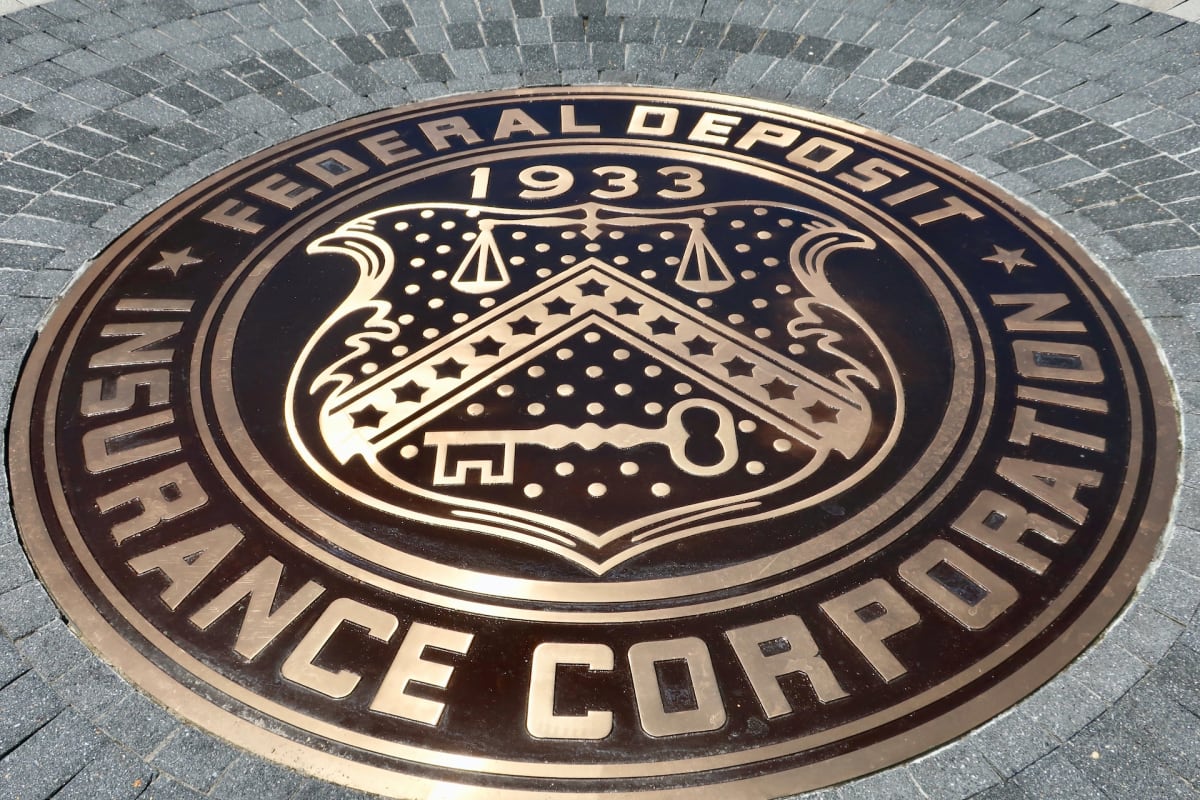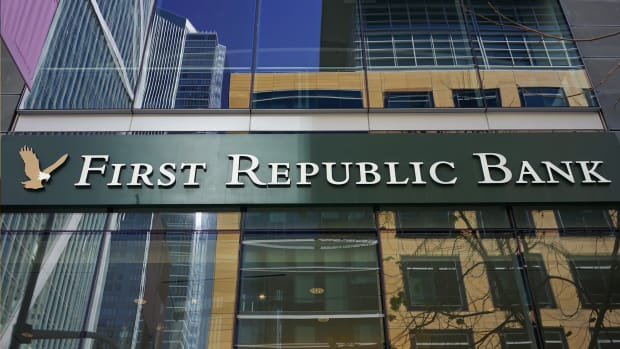
The banking system should increase the amount of deposit insurance provided to customers by giving business accounts more coverage in an effort to avoid future bank runs, the FDIC said on Monday in a report.
The recent bank failures shed light that several banks have a large amount of deposits that are uninsured, which led to massive bank runs as customers were fearful that they would only receive a portion of their money. The FDIC currently insures deposits up to $250,000 for both consumer and business accounts.
DON'T MISS: FDIC: Signature Bank Failed Due to Poor Management
The FDIC made three recommendations to reform the current deposit insurance system, but said it favored targeted coverage, which calls for offering "different deposit insurance limits across account types," according to the report.
"The FDIC believes targeted coverage best meets the objectives of deposit insurance of financial stability and depositor protection relative to its costs," the agency said.
Any changes to deposit coverage amounts would need Congressional approval.
The FDIC did not set a timeline for any potential actions.

FDIC Offers Three Options
The targeted coverage option would give business payment accounts which typically include funds for payroll "significantly higher coverage than other accounts."
The FDIC said banks could seek to provide limited coverage by keeping the current framework, but possibly increasing the $250,000 current limit.
Another option was to provide unlimited coverage by extending unlimited deposit insurance coverage to all depositors. The analysis by the FDIC was overseen by FDIC Chairman Martin Gruenberg.
The number of uninsured deposits rose to 46.6% in 2021, setting a record since 1949.
The recent bank failures of Silicon Valley Bank and First Republic Bank, both in California and Signature Bank in New York all led to massive bank runs.
As banks grew in recent years, the share of uninsured deposits also increased.
"Uninsured deposits are held in a small share of accounts but can be a large proportion of banks’ funding, particularly among the largest 10% and largest 1% of banks by asset size," the FDIC said in its report. "Large concentrations of uninsured deposits, or other short-term demandable liabilities, increase the potential for bank runs and can threaten financial stability."
The uninsured depositor runs "triggered" the failures of Silicon Valley Bank and Signature Bank in March 2023, which were the second and third largest bank failures, the FDIC said.
Massive Bank Runs in March and April
First Republic Bank in California was acquired on Monday in a last minute bailout by JPMorgan Chase after a loss of confidence from investors and customers.
The San Francisco-based bank's survival was tenuous, impacted by a lack of confidence by investors despite the $30 billion in deposits made in March to First Republic Bank by a coalition of 11 U.S. banks to shore up its liquidity and avoid a bank run similar to Silicon Valley Bank and Signature Bank.
Depositors rushed to withdraw their funds - the bank said on April 25 that the exodus totaled nearly $72 billion in deposits from Dec. 31 to March 31. Rattled investors rushed to sell their shares and the bank's stock was halted several times on the New York Stock Exchange on April 25.
The contagion spread to FRB after a large number of customers made withdrawals at Silicon Valley Bank and Signature Bank.
FRB said last week that its deposits declined by 41% to $104.5 billion during the first quarter. The decline was much larger than analysts had anticipated since they estimated that deposits would fall to $136.7 billion during the first three months of the year.
Technology Increased Bank Runs
The bank runs were fueled partly by how fast information travels now as customers learned about the financial distress of each bank through the media, social media and other forms of communication such as texting.
"The speed with which information, or misinformation, is disseminated and the speed with which depositors can withdraw funds in response to information may contribute to faster, and more costly, bank runs," the FDIC said. "The spread of information and the ability of depositors to transfer funds overnight and on weekends may make it more challenging to promptly intervene in a bank run."
The increase to the $250,000 threshold for deposit coverage occurred in 2008.
The Emergency Economic Stabilization Act of 2008 temporarily raised the basic FDIC insurance limit from $100,000 to $250,000 on October 3, 2008. In 2010, the Dodd-Frank Act made the increase permanent.
In 1980, deposit insurance coverage for all accounts was increased to $100,000 by provisions of the Depository Institutions Deregulation and Monetary Control Act.
The goal of providing deposit insurance is to "promote financial stability," the FDIC said.
"When there is a bank run, a bank may be forced to liquidate assets inefficiently," the report said. "The bank may need to be sold on short notice, reducing its valuation and increasing resolution costs. A bank run may also lead to contagion, as demandable liability holders at similarly situated banks withdraw their funds, leading to increased stress in the banking system."







